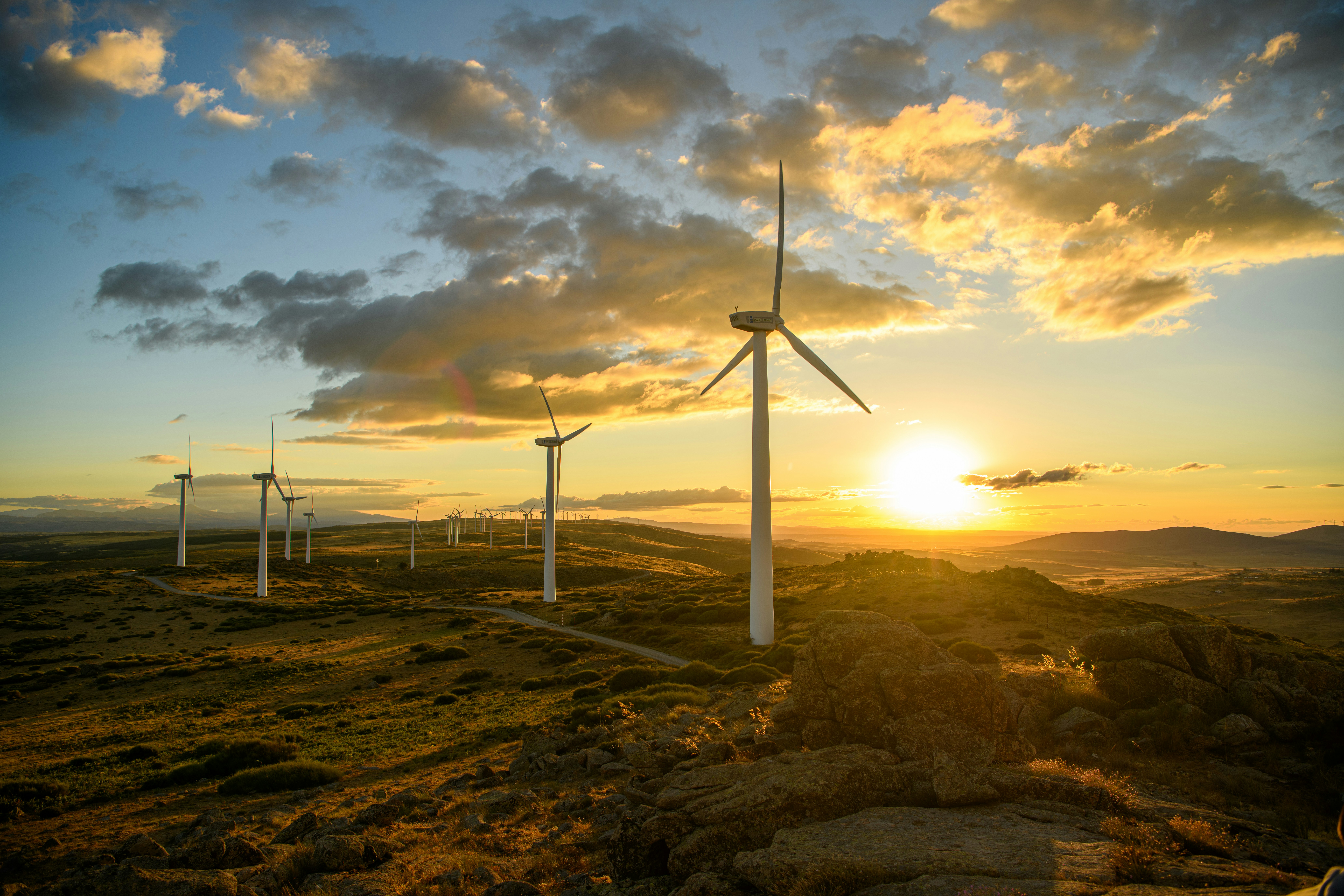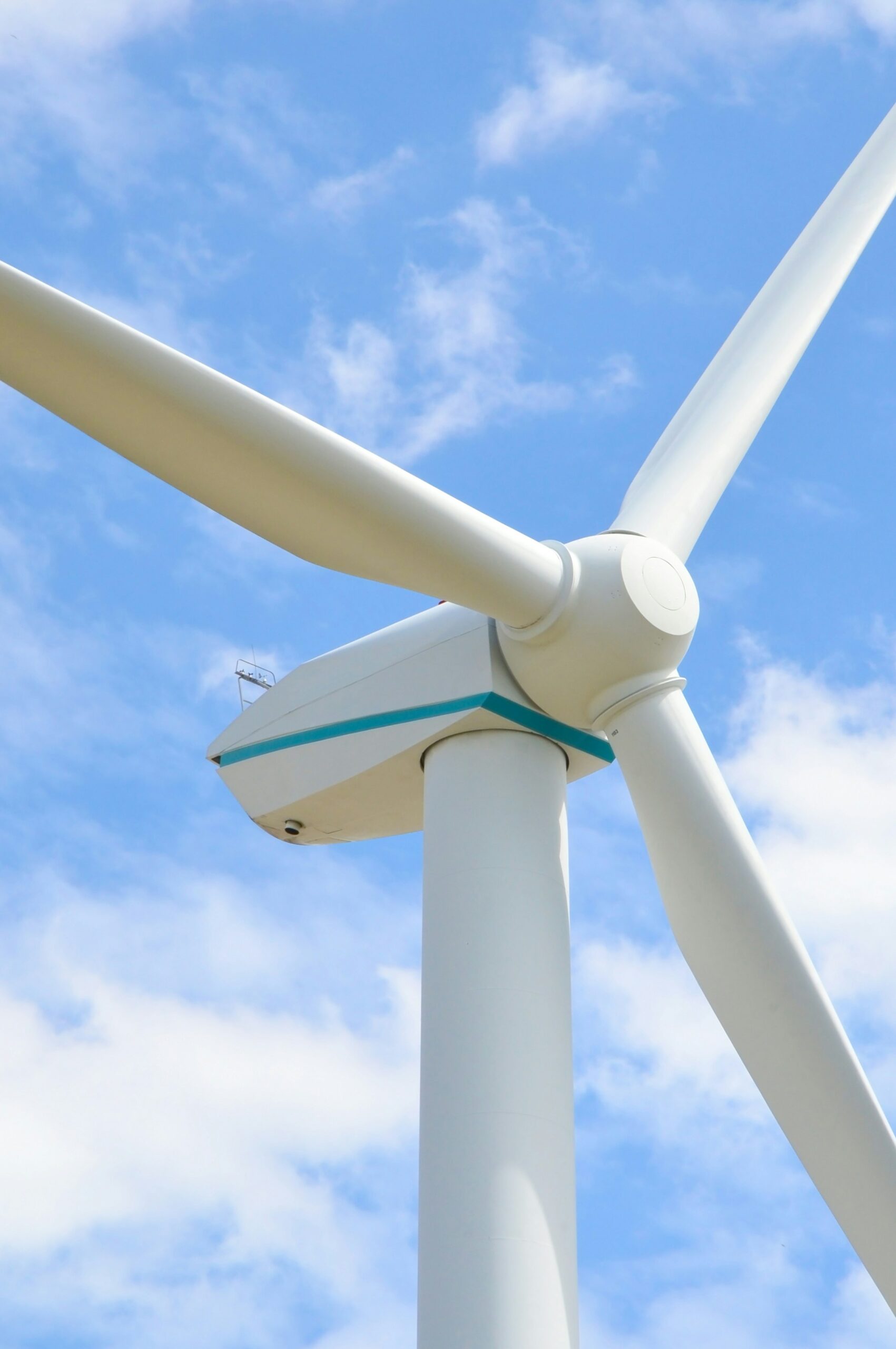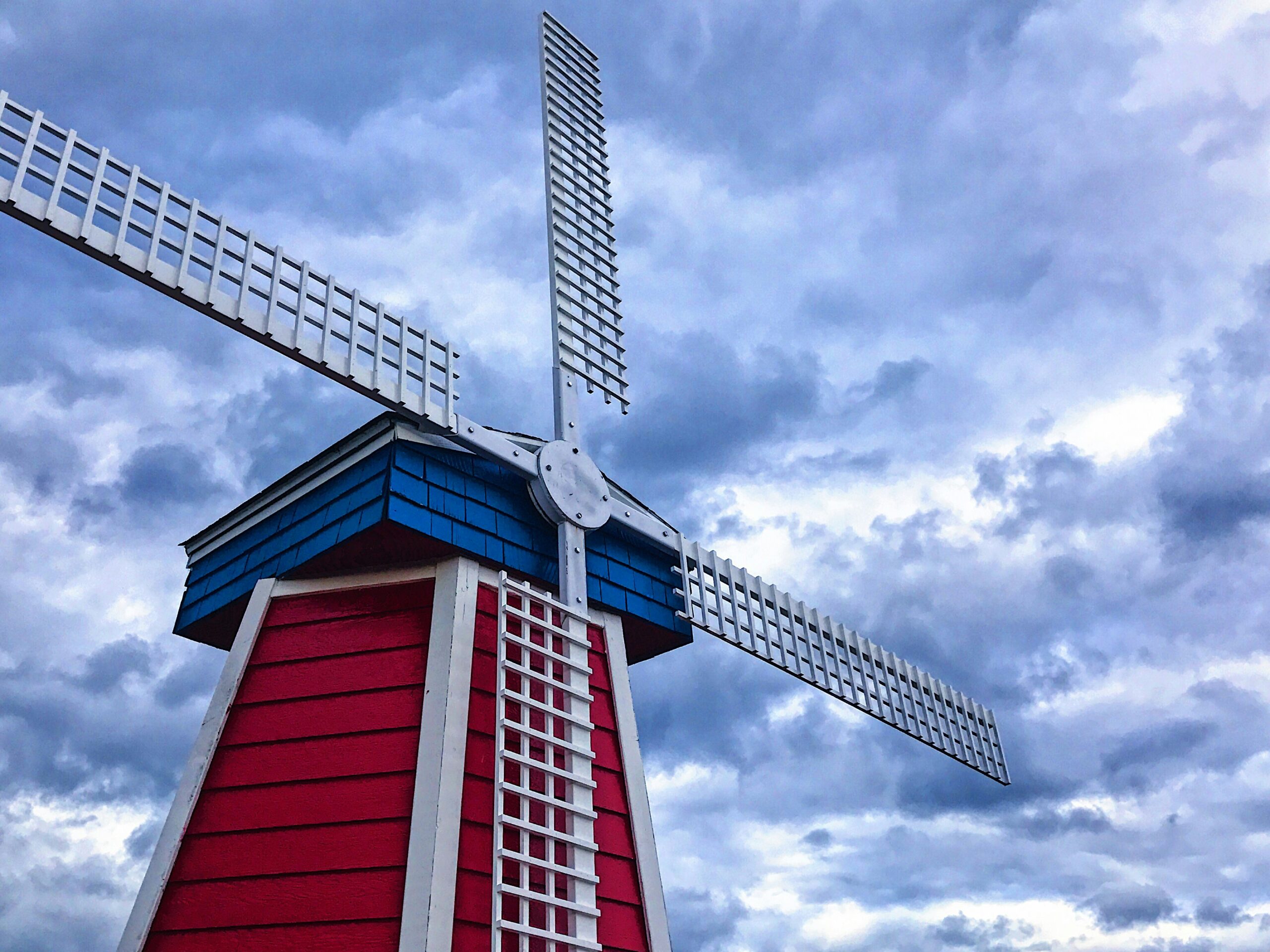5901 Botham Jean Blvd, Dallas, TX 75215
What are Windmill Turbine Blades and How Do They Work?
June 29, 2025Wind turbine blades are exceptional engineering components that serve as the primary energy harvesters in modern wind power systems. These aerodynamically designed structures capture kinetic energy from the air and transform it into rotational motion, generating electricity. The renewable energy process begins with these meticulously crafted blades.
As wind flows across a turbine blade, it creates a pressure difference between the two sides. The curved shape results in lower pressure on one side and higher pressure on the other, generating lift, much like an airplane wing. This lift causes the blades to rotate around the hub. Although the physics behind this process is simple, it is highly effective. Each rotation drives the internal mechanisms that ultimately produce clean electricity.
Modern turbine blades are manufactured using advanced composite materials, primarily fiberglass reinforced with polymers or carbon fiber. These materials offer an ideal combination of high strength, flexibility, and low weight. In 2023, the wind industry increasingly adopted carbon fiber components for longer blades that can harvest more energy while withstanding the significant forces experienced during operation in varying weather conditions.
How Has Wind Turbine Blade Design Evolved?

Wind turbine blade design has undergone a significant transformation since the industry’s inception. Initially, blades were simple wooden designs with flat surfaces and minimal efficiency in capturing wind energy.
The adoption of airfoil shapes marked a major breakthrough. Engineers applied principles from aircraft wing design, transitioning from flat surfaces to curved profiles that generate lift. This aerodynamic enhancement allowed blades to harness energy from both the wind’s push and the lift created by the airfoil shape.
Blade lengths have increased dramatically over the generations. Early commercial turbines featured blades just a few meters long, while modern utility-scale turbines have blades exceeding 80 meters. This larger sweep area allows for capturing energy from a much greater volume of moving air.
Structural Advancements
Modern blade designs incorporate twists and tapers along their length. The twist ensures an optimal angle of attack at varying distances from the hub, while tapering effectively distributes weight. These design features significantly increase energy capture without adding excessive weight.
As blades have grown larger, engineers have also refined internal structures. Today’s designs include complex internal support systems, such as spars, ribs, and structural webs, providing strength while using minimal material. These components maintain blade integrity under extreme weather conditions.
Advancements in manufacturing techniques have enabled more precise and consistent production. Computer-aided design and automated fabrication allow for tighter tolerances and enhanced quality control compared to earlier hand-built blades.
Material Revolution
A transformative aspect of blade evolution is the material transition. Early wooden blades were replaced by fiberglass composites, offering superior strength-to-weight ratios and durability. Glass Fiber Reinforced Plastic (GFRP) became the industry standard for many years.
The latest designs incorporate advanced materials like carbon fiber reinforced plastics (CFRP). These composites provide exceptional strength while being significantly lighter than earlier materials, enabling longer blades without overburdening the turbine’s structure.
Innovations in materials have also enhanced blade resilience. Modern composites resist fatigue, corrosion, and UV degradation better than earlier materials, resulting in longer service life and reduced maintenance needs despite more demanding operating conditions.
Blade design is continually evolving, with computer modeling enabling engineers to test new concepts virtually. Manufacturers now optimize blades for specific wind regimes and installation sites, rather than relying on one-size-fits-all designs. This focused approach maximizes energy production across diverse environmental conditions.
What Materials are Used in Modern Wind Turbine Blades?

Modern wind turbine blades are engineering marvels that combine advanced materials science with precise design to efficiently capture wind energy. These massive structures must be strong, flexible, and lightweight to withstand harsh conditions while maximizing energy production.
Fiberglass Composites: The Industry Backbone
Fiberglass composites form the foundation of most modern wind turbine blades, combining glass fibers with polymer resins to create structures that are remarkably strong yet flexible. Think of fiberglass like reinforced concrete – the glass fibers act as rebar, providing tensile strength, while the resin matrix binds everything together, similar to how cement surrounds and holds steel reinforcement.
The popularity of fiberglass stems from its excellent balance of properties. It offers a good strength-to-weight ratio, corrosion resistance, and durability at a reasonable cost. These composites typically consist of glass fibers embedded in epoxy or polyester resin, creating a material that can flex slightly under wind loads without breaking – crucial for structures that must withstand millions of stress cycles over a 20+ year lifespan.
Carbon Fiber: The Performance Enhancer
Carbon fiber composites represent the premium end of blade materials, using carbon filaments thinner than human hair yet incredibly strong. If fiberglass is like reinforced concrete, carbon fiber is comparable to high-performance steel – dramatically stronger and lighter, but at a higher cost.
The exceptional stiffness-to-weight ratio of carbon fiber makes it ideal for creating longer, more efficient blades. While longer blades capture more wind energy, they also face greater structural challenges. Carbon fiber provides the necessary rigidity to prevent excessive blade deflection while keeping weight manageable. Its superior fatigue resistance also helps extend blade lifespan, especially in demanding offshore environments where maintenance is costly.
Hybrid Material Approaches: Getting the Best of Both Worlds
Modern blade manufacturers often use a strategic approach by combining different materials to optimize performance and cost. Many blades use fiberglass for the bulk of the structure while incorporating carbon fiber in critical load-bearing areas like the spar caps, the main structural elements running the blade’s length.
This hybrid approach is akin to how modern sports equipment is designed—like a tennis racket with carbon fiber reinforcement in strategic locations where strength matters most. By placing premium materials exactly where they deliver the greatest benefit, manufacturers can significantly improve blade performance without the cost of all-carbon construction.
Emerging Materials: Natural Fiber Composites
As sustainability concerns grow, some manufacturers are exploring natural fiber composites using materials like flax, hemp, or bamboo as alternatives to glass or carbon fibers. These bio-based materials offer potential environmental benefits with lower embodied energy and better end-of-life recyclability.
While natural fiber composites currently don’t match the mechanical properties of conventional materials, they represent an important direction for future development. Like early electric vehicles, these promising technologies are still evolving toward mainstream viability.
Surface Treatments and Coatings: The Finishing Touch
The outer surface of wind turbine blades receives specialized treatments to enhance performance and durability. These include:
- Erosion-resistant coatings that protect against rain, dust, and debris impact
- Hydrophobic treatments that shed water and prevent ice buildup
- UV-resistant finishes that prevent degradation from sun exposure
- Vortex generators – small fins on the blade surface that improve aerodynamic performance
These surface treatments are akin to the protective clear coat on a car – they don’t provide structural strength but are critical for maintaining performance over the blade’s operational life.
Impact on Blade Performance
Material selection profoundly affects overall turbine performance. Lighter blades require less energy to start rotating in low winds, allowing energy capture in milder conditions. Stiffer materials enable longer blades that sweep larger areas and capture more energy. More durable materials reduce maintenance costs and downtime, improving the economic performance of wind farms.
The evolution of these composite materials has directly enabled the dramatic increase in turbine size and efficiency over the past decades. Modern turbines with longer, more sophisticated blades can generate electricity at lower wind speeds and in a wider range of conditions than earlier designs.
As wind energy technology continues to advance, materials science remains at the forefront of innovation. The ongoing development of stronger, lighter, and more sustainable composite materials will continue to push the boundaries of what’s possible in wind turbine design, making renewable energy more efficient and accessible worldwide.
What are the Key Factors in Efficient Blade Design?

Designing efficient wind turbine blades requires balancing aerodynamic performance with structural integrity. Engineers must consider several critical factors to maximize energy capture while ensuring the blades can handle the forces they encounter. Here are the key design elements that determine blade efficiency.
Aerodynamic Profile: Balancing Lift and Drag
The cross-sectional shape of a wind turbine blade greatly influences its performance. Modern blades use airfoil profiles, akin to airplane wings, designed to maximize lift and minimize drag. The curved upper surface creates lower air pressure compared to the underside, generating the lift that propels the turbine.
The angle of attack—the angle between the wind direction and the blade’s orientation—must be optimized along the entire blade. An angle too steep leads to excessive drag, reducing efficiency, while too shallow an angle prevents sufficient lift. Balancing these angles is crucial for optimal performance.
Length and Aspect Ratio: The Impact of Size
A blade’s length directly affects its energy capture potential. Longer blades cover a wider area, intercepting more wind energy. However, this relationship isn’t linear—doubling a blade’s length can quadruple power output. Hence, modern utility-scale turbines feature longer blades, some exceeding 80 meters.
Aspect ratio—the relationship between blade length and chord width—also affects efficiency. Higher aspect ratios generally provide better aerodynamic performance but require stronger materials to handle increased structural loads. Engineers need to balance these factors against manufacturing constraints and costs.
Twist and Taper: Enhancing Performance Along the Length
Wind speed varies significantly along a blade’s length, with the tip moving faster than the root near the hub. Efficient blades incorporate a twist, gradually changing the pitch angle from root to tip to ensure each section maintains an optimal angle of attack despite varying wind speeds.
Tapering—reducing the blade width from root to tip—enhances performance by distributing stress more evenly and reducing turbulence-induced fatigue. It also reduces weight at the tips, lowering centrifugal forces on the turbine structure.
Materials and Internal Structure: Combining Strength and Flexibility
Modern wind turbine blades must be lightweight, strong, and flexible. Fiberglass composites are common due to their cost-performance balance, and high-performance blades increasingly use carbon fiber reinforcements, particularly in load-bearing structures, to enhance stiffness while reducing weight.
The internal structure typically features a box-beam or I-beam design running the blade’s length for essential rigidity. Sandwich-panel construction with balsa wood or foam cores creates strong yet lightweight shells. These structures must withstand millions of stress cycles over a 20-25 year lifespan.
Noise Reduction Features: Addressing Environmental Concerns
In wind farms near populated areas, reducing noise is crucial. Trailing edge serrations—inspired by owl wing feathers—can significantly cut aerodynamic noise. These saw-tooth patterns disrupt turbulent air flows that generate sound without affecting performance.
Other noise-reduction strategies include optimized tip shapes and leading-edge treatments that minimize vortex shedding. These design elements address community concerns and often improve aerodynamic efficiency.
Computer Modeling and Testing: Refining Performance
Advanced computational fluid dynamics (CFD) software enables engineers to simulate and refine blade designs before manufacturing. These models predict how blade modifications affect performance across various wind conditions. Wind tunnel testing then validates these predictions, often revealing opportunities for further refinement.
The most efficient blade designs balance these factors to maximize energy capture across a wide range of wind speeds. Since turbines operate in variable conditions, blades must perform well not only in optimal wind speeds but throughout their operational range. This comprehensive approach has greatly improved wind turbine efficiency, making wind power an increasingly competitive energy source.
What Happens to Wind Turbine Blades After Their Lifespan?
Despite their durability, wind turbine blades eventually reach the end of their service life—typically after 20 to 25 years. At that point, they must be decommissioned and either repurposed, landfilled, or recycled. However, recycling poses a significant challenge due to the very materials that make these blades so strong—complex composite structures that are not easily broken down.
Traditional disposal methods like landfilling or incineration are environmentally unsustainable and increasingly restricted by regulations. As a result, the wind energy industry is urgently seeking scalable recycling solutions to handle the growing volume of retired blades expected over the next decade.
How Are Wind Turbine Blades Recycled?
Innovative recycling methods are emerging to address the blade disposal issue:
-
Mechanical recycling involves shredding blades into smaller pieces that can be used as filler materials in concrete or asphalt.
-
Thermal recycling uses high heat to recover fibers from the resin matrix, though this can compromise material integrity.
-
Chemical recycling is a cutting-edge process that breaks down resins to reclaim fibers and other valuable raw materials with less degradation.
Some companies are exploring creative repurposing strategies, turning retired blades into pedestrian bridges, bus shelters, or even playground equipment.
However, the most sustainable and responsible option remains dedicated blade recycling services—especially those equipped to handle large composite structures efficiently and in compliance with environmental standards.
Conclusion: Recycle Windmill Blades Responsibly with Okon Recycling

Wind turbine blades are marvels of modern engineering—but even these advanced structures need a sustainable solution at the end of their life cycle. That’s where Okon Recycling comes in.
As a trusted leader in industrial recycling, Okon Recycling provides specialized services for the safe, eco-conscious disposal of windmill turbine blades. With the growing need to divert these massive components from landfills, we’re helping energy producers, contractors, and decommissioning teams meet regulatory standards while supporting a circular economy.
Ready to responsibly recycle wind turbine blades? Call Okon Recycling today at 214-717-4083. Let’s build a cleaner future together—one blade at a time.
